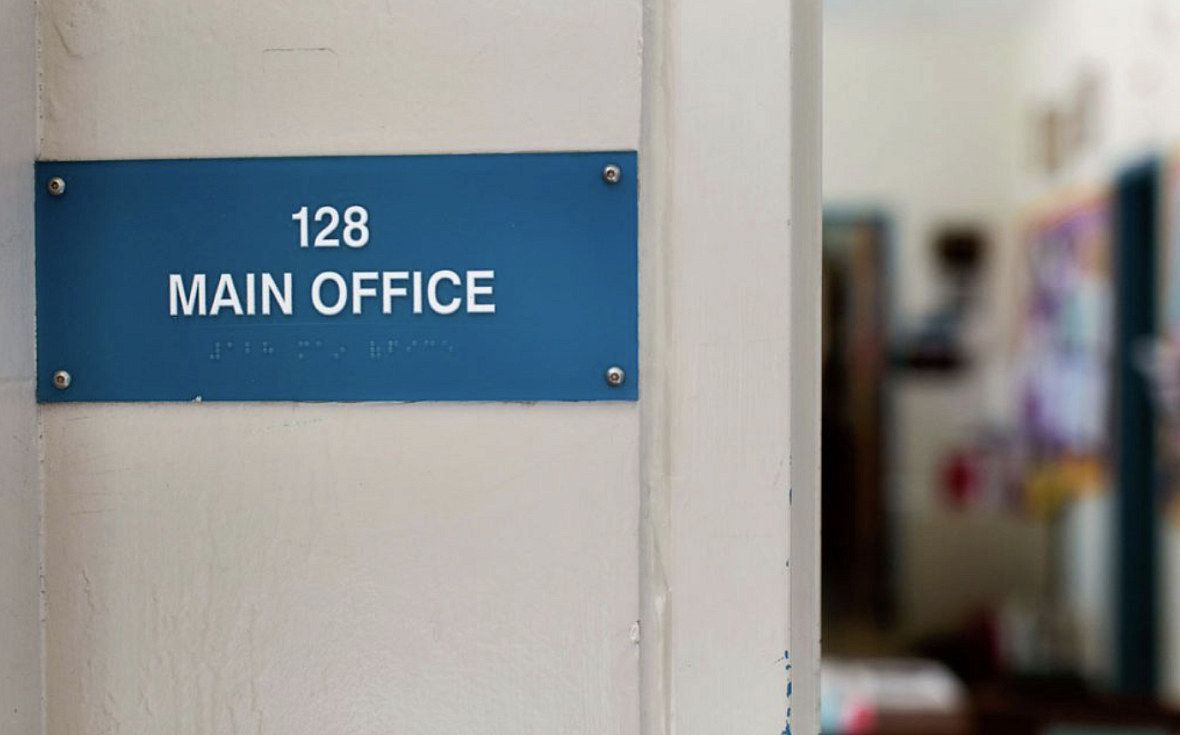Rural California school district with high suspension rates under state investigation
This story was produced as part of a larger project led by David Washburn, a participant in the USC Center for Health Journalism's 2018 Data Fellowship.
Other stories in this series include:
Help EdSource shine a light on challenges in rural education
Lost Days: Poverty, isolation drive students away from school in California’s rural districts
Lost Days: Inside one rural California district's efforts to combat chronic absenteeism

CREDIT: ALISON YIN FOR EDSOURCE
Butte County’s Oroville City Elementary School District, which has a suspension rate that is three times the statewide average, is under state investigation for its discipline policies and practices.
The investigation, by the California Bureau of Children’s Justice, is focused on the district’s record of suspending and expelling students and its alternatives to those punishments, according to a district statement. The statement also said the probe is examining the district’s “protections for foster and homeless youth,” but did not elaborate.
The Bureau of Children’s Justice is a division of the state Attorney General’s Office that enforces laws meant to protect vulnerable children. When contacted by a reporter, the Attorney General’s office said it “cannot comment on a potential or ongoing investigation.”
Students in the district, which serves the rural town of Oroville, lost more days to suspensions on a per-student basis than all but three California districts during the 2016-17 school year, according to a report by the UCLA Center for Civil Rights Remedies. The district with the most days lost per student was Oroville Union High, the town’s only high school district.
During the 2017-18 school year, 4 percent of students in California public schools were suspended at least once, while Oroville City Elementary suspended 12 percent of its students, according to state data. And the district recorded the seventh-most suspensions per student among districts with at least 100 students, according to an EdSource analysis of the statewide data.
The EdSource analysis also found that black students in Oroville City Elementary, which make up 3 percent of the district’s enrollment, were suspended 70 percent more often than their white peers on a per-student basis. At Ishi Hills Middle School, the district school with the highest suspension rate, black students were suspended more than twice as often as white students.
In its statement, the district said it has implemented a Positive Behavioral Interventions and Supports system, which prioritizes behavioral expectations and rewards over punishments, in all schools. The district’s Local Control and Accountability Plan will also include funding for an elementary school counselor and a social emotional learning teacher at the middle schools, the statement said.
A leading advocate for reducing suspensions in schools nationwide applauded the Attorney General’s Office for launching the investigation.
“I’m glad the attorney general is paying attention to both the high rates and large racial disparities,” said Daniel Losen, the director of the UCLA center and author of the organization’s suspension report. “There is a lot districts can do to lower suspension rates without jeopardizing the learning environment.”
Suspensions have dropped significantly across California in recent years, in part due to a bill former Gov. Jerry Brown signed into law in 2014 that banned so-called “defiance and disruption” suspensions in grades K-3. These suspensions target student behavior that disrupts school activities or otherwise willfully defies “the valid authority of school staff,” according to state law.
The ban came after years of advocacy on behalf of students of color and those with disabilities who are disproportionately suspended for defiance and disruption, according to a large body of research. Last year, Brown vetoed a bill authored by state Sen. Nancy Skinner, D-Berkeley, that would have extended the ban to all grades. Skinner re-introduced the bill this year.
The statewide drop, however, has been driven by urban districts, which educate 90 percent of California’s more than 6 million students. Suspensions are far more common on a per-student basis in rural districts like Oroville City Elementary. During 2017-18, suspension rates in California’s rural districts were 54 percent higher than in city and suburban districts, according to the EdSource analysis.
District Superintendent Spencer Holtom did not respond to a reporter’s requests for an interview. However, in an interview before the investigation was announced, Holtom acknowledged the district’s need to reduce the number of suspensions meted out in its schools. He said improving school climates is key.
“I am really trying to target the climate piece,” said Holtom, who came to the district in July 2018, after the 2017-18 school year had ended. “Because if I have a positive climate, I am going to have less bullying and less concerns about safety issues.”
Holtom has also brought Bobby Jones of Oroville’s African American Family & Cultural Center into schools to work with students in the district’s schools. Jones said one issue is the lack of African-American teachers in the district’s schools.
“With no black teachers on these campuses, our kids don’t have anyone to relate to,” he said.
Jones, however, said administrators and teachers at both the elementary and high school districts have made significant strides during the current school year.
“To me they are thinking outside the box, meaning they are willing to work with outside agencies to come in and see how they can help these kids come along,” Jones said. “And hopefully they are seeing the difference.”
[This story was originally published by EdSource.]

